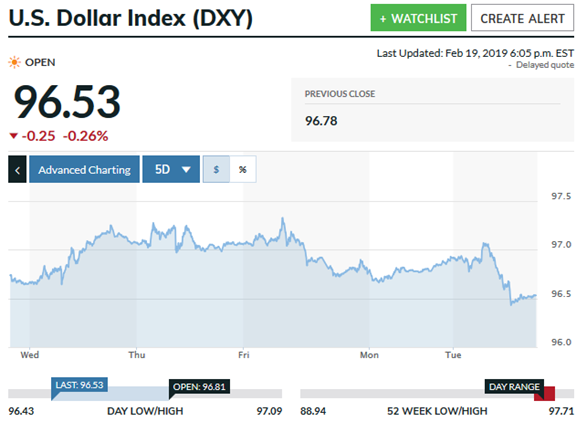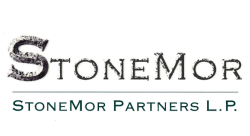The roundup for today's MarketFoolery includes Tesla (NASDAQ:TSLA), Texas Roadhouse (NASDAQ:TXRH), some general investing advice, and an international growth story that deserves more attention. Tesla's C-Suite revolving-door drama continues, and this departure is especially concerning. Texas Roadhouse has been quietly knocking it out of the park for years, but the market doesn't seem to care about yet another stellar report this week.
Listener William writes in, asking about the merits of lump sum vs. regular interval investing. The head of Motley Fool Asia David Kretzmann explains why Malaysia is such an exciting opportunity for investors. Check out fool.sg/malaysia for a few of Malaysia's most promising companies and to learn more about The Motley Fool's Malaysia MoneyMakers service.
A full transcript follows the video.
This video was recorded on Feb. 20, 2019.
Chris Hill: It's Wednesday, February 20th. Welcome to MarketFoolery. I'm Chris Hill. Snow is falling from the sky.
David Kretzmann: Was that real? Is that a real link?
Hill: [laughs] You know what? Go to snowfall.com.
Kretzmann: I'm going to do that right after we finish taping.
Hill: You're going to get a couple of bucks off the first couple of inches of snow. We got it for free. Schools closed everywhere in the D.C. area. I think the Federal government is closed, as well. But no, not here. Not here at MarketFoolery. Not as long as the intrepid Dan Boyd, producer extraordinaire, is behind the glass, and as long as David Kretzmann continues to live geographically close to the office. You're not moving anytime soon, are you?
Kretzmann: Absolutely not, if I get this gig for the one or two snow episodes a year, I'm totally staying here.
Hill: Look, I like talking to you even when it's not a situation where snow is falling and roads are shut down and all that sort of thing.
Kretzmann: Well, I appreciate it!
Hill: We're going to dip into the Fool mailbag. Stop me if you've heard this before, but an executive is leaving Tesla. We'll get to both of those. Let's start, though, in the restaurant industry. Texas Roadhouse. It looked like a good fourth quarter. I mean, same-store sales for Texas Roadhouse at the franchise restaurants was nearly 5%; at the company-owned restaurants it was about 5.5%. In this environment, coming off of the year that the restaurant industry just had, you'd think people would throw them a parade.
Kretzmann: I know. I feel like a broken clock talking about Texas Roadhouse the past couple of years. The restaurant industry in the U.S. has been in a funk for close to three years now, but Texas Roadhouse has consistently been one of the top performers. I think on the public market level, really the only company that matches or exceeds Texas Roadhouse is Domino's. But Texas Roadhouse's quarter, like you mentioned, comps at their company-owned stores up over 5.5%. So far, we're about 55 days into the first quarter of 2019, and those comps are up 6%. In a time when a lot of restaurants are struggling, Texas Roadhouse continues to put up really impressive traffic numbers, and they're not doing it with gimmicky sales or lowering prices to lure people in. They're continuing to offer a consistent quality experience, quality food, and that's a formula that's worked really well for them now. This was their 36th consecutive quarter of comp growth. They've really had an impressive track record over the past decade.
I think part of the reason the stock is selling off a bit today, or we're not seeing a huge reaction from the market, the guidance for 2019 was good but it was vague. They just said that they expect positive same-store sales growth, rather than putting up, maybe, "We expect 3% to 5% same-store sales growth," which would be more impressive. But I think they'll get there. This management team typically keeps things close to the vest. They're not going to be too flamboyant out there when it comes to guidance.
The stock is also on the pricier side for a restaurant. I think the stock does deserve a premium, but they're trading for 28 times to 30 times earnings right now, which is a lofty multiple. With somewhat vague guidance, earnings growth was also a little bit pared back for this most-recent fourth quarter just because of higher labor costs and tax issues and things like that.
All in all, though, I think if you're a Texas Roadhouse investor -- including myself -- you continue to feel really good about the approach of this management team, the prospects of the company. Slow and steady, reliable formula for growth.
Hill: You mentioned Domino's. Yes, Domino's is a competitor in the sense that all restaurants are competing with each other on some level. Obviously, in the case of Domino's, they're not a restaurant per se, but they're certainly in the food business. That being said, I completely agree about the management team at Texas Roadhouse. In some ways, I think of this restaurant and this management team as being one to watch even if you don't own the stock. It's probably an overstatement to say that Texas Roadhouse is a bellwether within the industry. I guess I'd put it this way: If Texas Roadhouse starts to have meaningful problems, then I think that spells even more trouble for the restaurant industry.
Kretzmann: Yeah. They've been a shining jewel in the restaurant space. Chipotle is sort of making a comeback now, but they still have their fair share of issues to work through. CEO Brian Niccol is still in the early stages of his tenure at Chipotle. But when you look at the past decade, it's really just been Domino's and Texas Roadhouse when you're looking at consistent performance quarter in and quarter out, year in and year out. So yeah, I agree -- if Texas Roadhouse starts to hit some headwinds, then you really have to wonder, man, what does that mean for the rest of the restaurant industry, which is already facing some issues over the past few years?
Up to this point, they're seeing stronger growth, it sounds like, so far in 2019. I think that bodes well for the rest of the year for the company and for shareholders. We'll just have to see where things go. For now, they're still focusing on the core Texas Roadhouse concept. They have close to 600 restaurants. They'll cross that 600 restaurant mark sometime this year. They're still in the very early stages of testing out that Bubba's 33 concept, which is a family sports-bar-type dining environment. But the vast majority of the new locations that they're opening are Texas Roadhouse locations. They're expecting to open about 33 Texas Roadhouse locations in 2019 and maybe four Bubba's 33 locations. The focus continues to be on that Texas Roadhouse concept.
Hill: We still haven't gotten to the Bubba's 33, which is in Glen Burnie, Maryland. We have to get up there at some point.
Kretzmann: I didn't know there was one that close. I thought it was in Ohio.
Hill: No, there's one in Glen Burnie, Maryland. Not too far from where we are. But given the road conditions, we're not going today.
Kretzmann: Not today.
Hill: But at some point, we'll get out there.
Kretzmann: Research!
Hill: So, once again, Tesla. [laughs] The C-Suite revolving door continues. In this case, it's the general counsel, Dane Butswinkas -- hopefully, I'm pronouncing that correctly -- who has been the general counsel at Tesla for exactly two months. [laughs] So, if you're like, "Wait, didn't the general counsel just leave two months ago?" Yes, and now this one is leaving. What's even slightly more troubling to me about this is, this general counsel did not come out of left field to join Tesla. He was with the consulting law firm that Tesla uses. This is someone who presumably had -- maybe not as close a look at how Elon Musk and his executive team operate -- but certainly had some level of familiarity, and still, two months inside of Tesla, decided, "Nope, I have to get out of here," and goes back to the law firm.
Kretzmann: One element that makes this a little more concerning is that he was brought in to help resolve the fiasco that happened with Elon Musk and his Twitter debacle, where Elon Musk was basically tweeting out guidance, tweeting out that the company was looking to get acquired and that he has funding secured and all that stuff. This lawyer who came in -- I'm not going to attempt to pronounce his name, you do a better job of that as a host, Chris -- he came in to help bring about that settlement with the SEC where Elon Musk paid a $20 million fine, agreed to step down as chairman for three years. So, for him to step down as general counsel just a couple of months after reaching that settlement, kind of a head-scratcher. A little bit puzzling.
And then, it's ironic -- I don't know if it's at all related, but within the past 24 hours, Musk tweeted that Tesla will make 500,000 cars this year. Then, subsequently a few hours later, he clarified, saying, "No, what I actually meant to say was that we'll deliver close to 400,000 vehicles in 2019," which is comparable to the guidance he'd already put out, "but we'll make 500,000 cars." So, a distinction between making vehicles vs. delivering vehicles. Anyway, Musk treading close to the line there as far as giving guidance or financial commentary on Twitter that could potentially move the stock. Has Musk learned his lesson? I think that's the eternal question when it comes to him and Twitter, and I don't think that's totally been solved yet.
Hill: I don't think it has. It's got to be a little troubling for shareholders in this regard -- part of that SEC agreement was, he'd said, "We're going to have someone monitoring my tweets," presumably before they go out, not after. The SEC is not known for its sense of humor. The SEC is not messing around. So, there was the whole back-and-forth with the agreement the last time around, you have to assume that if he gets in trouble with the SEC again, it's going to be dramatically worse. It's going to be dramatically more punitive. Put aside the fine that he has to pay. He's got the money, he can pay that. You have to wonder what it's going to look like if he continues to go down this road. It's one thing to be like, "The chief financial officer is leaving." Anytime you get a general counsel -- and apparently someone with the company was quoted as saying, "It was a cultural thing, he didn't have a good cultural fit with the company." I don't know, that sounds like code for "he couldn't stand working with Elon Musk." I could very easily be wrong about that. But not all executive turnover is equal, and this one appears to be more troubling than others.
Kretzmann: Yeah. I think working with Elon Musk, it's safe to say that it's a binary spectrum where you either love working with him or you hate it. Either it works really well or it just doesn't work at all. As a result, you're seeing this revolving door on the executive level at Tesla.
But really, at the end of the day for Tesla, what matters is, are they making and delivering these vehicles? And they're seeing some pretty clear progress. The last couple of quarters of 2018, you're seeing what looks like almost exponential growth. When you're looking at the company's history of quarterly vehicle deliveries, it really spiked up toward the end of 2018. If they can hit those revised targets that Musk tweeted out over the past day, that would be impressive growth, potentially more than doubling what they did in 2018. So from a fundamental perspective when it comes to making vehicles, which is what Tesla needs to do to survive as a stand-alone entity, they're making some progress. But then, they have issues with the tax rebate being taken off the table, cutting some of the workforce, adjusting the prices lower. There are a bunch of different variables. Will they be able to produce the Model 3 in a profitable way at scale? That's really, at the end of the day, the ultimate question that Tesla shareholders need to be asking. It's still not entirely clear. Obviously, you either trust Elon Musk or you don't, and there's still a lot of skepticism when it comes to Musk.
Hill: As we say in sports, anytime there's trouble in a locker room or any sort of cultural problem, winning cures everything. As you said, everything I just said about how troubling this is in the C-Suite, if they end up crushing their numbers this year, that solves a lot of the problems.
Kretzmann: Over the past year, Tesla's stock has dropped a decent amount. It hasn't been a terrible performer by any means. A year ago, if you'd said all the different issues that would happen, with Musk being in the spotlight and having these issues with the SEC, you probably would have expected Tesla to be trading far below where it is today at about $300 a share. A year ago, it was around $350. So, it hurts, but compared to other high-flying companies, that's not bad by any stretch. Still, it's been a strong performer over the past three to five years. The stock and the company have been resilient despite all of the public drama that surrounds the persona of Elon Musk. As long as they can get that production, particularly the Model 3, ramped up at scale in a profitable way, the company should be in good shape.
Hill: Before we dip into the mailbag, I have to say thanks to a listener. I wish I could name this listener, but I can't, because he or she sent me a package of coffee from Costa Rica -- which I have to say is fantastic! They do coffee right in Costa Rica.
Kretzmann: So I've heard!
Hill: There was a handwritten note and I couldn't quite make out the name. I think it's Cam. I'm not really sure. Cam, thank you for the coffee! I got it, it's fantastic, it's delicious! Really appreciate it!
Our email address is marketfoolery@fool.com. Question from William Wabrant in Sweden. William writes, "I'm an engineering student who just acquired a chunk of cash that essentially doubles my portfolio size." Well done!
Kretzmann: Awesome!
Hill: [laughs] It's always nice when a chunk of cash just hits you in the face. He writes, "I know lump sum investing is the way to go mathematically, but I'd love your input, especially in these times post-market recovery. Right now, I'm most likely just investing everything allocated well the same day it arrives."
Talk about your good problems to have. "Hey, I came into this chunk of cash, how do I invest it?" I mean, I'm sort of tempted to say, look at whatever combination of stocks you own and what's on your watch list and allocate accordingly. As we've said before, a lot of times, the best investment you make might be one you already own. What do you think?
Kretzmann: I don't think you should feel pressured to buy new stocks necessarily. You should be putting money in your highest-conviction stocks. As you become more experienced as an investor and you see your portfolio grow -- which is a great problem to have -- you can start to look at your overall allocations in the portfolio. If you already have maybe 8% or 10% or 12% of your portfolio allocated to a certain company, maybe you don't look to add to that right away. On the flip side, if there's a company you really love that's only 1% or 2% of your portfolio, maybe you focus there to bump up your allocation.
When it comes to whether to invest everything at once or have some cash on the side and invest it over time or in certain increments like, say, every month or quarter, really you just have to invest however [it] raises the odds that you will hold your stocks over the long term. There are a bunch of different studies where it'll show whether you invest a lump sum or invest on a monthly basis in the same increments. All those studies will show essentially that the longer you hold your stocks, the better off you'll be. I know co-founder of The Motley Fool David Gardner personally never holds any cash. If he has cash to invest, he invests it right away because historically, you look at a long-term chart of the stock market, it's up and to the right. That theoretically means that the best time to buy stocks is today if you can hold for five, 10, 20, 30 years. But for some people, having some extra cash on the sidelines will raise the odds that they can hold their stocks as they inevitably go down in certain periods. You have that cash almost as a cushion or an insurance policy that you can dip into to take advantage of the buying opportunity when stocks do drop.
Whether it's investing a lump sum or investing on some sort of regular basis, you just need to think about, what is your tolerance for volatility? Stocks will be volatile. There will be periods where your portfolio is down 20%, 30%, 40%, 50%. Does having cash on the side raise the odds that you won't panic when the market drops? Or are you the type of person who is resilient enough on an emotional level to hold through thick and thin, even if you don't have very much cash? Your answer to that, wherever you fall in that spectrum, should inform your decisions. At the end of the day, you just need to do whatever you can do to lengthen your holding period and raise the odds that you won't panic when stocks go down.
Hill: I'll just add, from an industry standpoint, you might want to look at what you've got in your portfolio and think, are there any ginormous holes? If you look at your portfolio and you think to yourself, "I've got some good diversification across industries, but I don't have a dime invested in healthcare," which is an enormous industry, or "I don't have anything invested in energy," something like that, that's one more lens to look through. That's something where you can say, "I'm going to dip in with this unexpected cash that's come my way and look to get exposure across even more industries."
Kretzmann: Yeah, for sure. For me, everything comes back to building your portfolio in such a way that you can hold for the long term and you're maintaining a long-term perspective. Whether it's diversifying across different industries or companies or even diversifying across time -- maybe it's just emotionally more comfortable to invest every month than it is to invest that lump sum of cash all at once. Really, whatever makes you more comfortable and raises the odds that you can focus on the long term, because that's really what it comes down to. You can always look at a bunch of different studies that show, "It's best to do this vs. that," but you're not going to benefit from stocks over the long run if you can't hold them over the long term. It really comes down to buying and holding, so whatever you can do to become more comfortable with that will raise your odds of long-term success.
Hill: Really quick before we get out of here, your new role, for those who haven't heard David recently, here at the company, you're heading up Motley Fool Asia. You got a little news you want to break?
Kretzmann: Yeah! Within Motley Fool Singapore, which is our quote-unquote "mature business" within Asia, still very much in start-up mode, our Singapore operations have been around for just over five years now, but we're dipping into new territory --
Hill: Oh, I thought you were taking a shot at David Kuo's age.
Kretzmann: No! Not at all! I'd never do that!
Hill: [laughs] No! We love David Kuo!
Kretzmann: Absolutely, David Kuo is the man, as well as that entire team over there. This month -- actually today -- we're launching for the first time ever a service focused on a market outside of Singapore. We're actually looking at Malaysia. Probably, if you're based in North America, that probably isn't a country you think about a ton, but there's a lot of different traits about Malaysia that make it really interesting right now. David Kuo spent his entire Christmas vacation looking at Malaysia and ended up finding 15 Malaysian companies that he's very excited about for the long term.
A few interesting stats and traits about Malaysia. Malaysia has six times the population of Singapore, about 31 million people within Malaysia. But currently, Malaysia still has a smaller economy, a lower GDP, compared to Singapore. You think about the long-term implications of that: If Malaysia can crack the code and continue this growth streak that it has shown over the past decade, there's probably a lot of long-term growth opportunity for Malaysia on a macro level and for individual companies to benefit from that growth within Malaysia. In November, Bloomberg actually ranked Malaysia as the top emerging market. You're seeing a lot of different factors that are contributing to the growth that we've seen with Malaysia over the past decade. Its economy has grown at about 5% annualized. Recently, it's even bumped up to 6% or 7%. It looks like there are a lot of tailwinds for Malaysia to continue growing in the years ahead.
That was an opportunity that really excited David Kuo. This new service is called Malaysia MoneyMakers. As I mentioned, it's really David Kuo finding his top 15 highest conviction Malaysia-based companies. Something that's fascinating to me about David Kuo, he's actually never sold a single stock in his life.
Hill: Really?!
Hill: Never sold a single stock. He and I were having dinner when I was in Singapore last month, and I mentioned, "Yeah, it's pretty interesting. Tom Gardner, Motley Fool co-founder and CEO, he launched the Everlasting Portfolio several years ago, and Tom basically committed to never selling a stock for a minimum of five years." And David Kuo told me, "I've actually never sold a stock in my entire lifetime." I'm like, "Well, that's kind of tough for anyone to trump." David Kuo will actually be investing $100,000 of his own money into these 15 Malaysian companies. He's made it really clear, he's going to be holding these for the rest of his life and pass them on to his children and grandchildren. A totally Foolish approach to this brand-new market for us at The Motley Fool.
If you're interested in checking out the research that David and his team have done, maybe explore the product, you can go to fool.sg/malaysia. You can learn more about Malaysia MoneyMakers from Motley Fool Singapore.
Hill: We'll put the link in the description of this episode so folks can just open up the description and click on that link.
Kretzmann: Awesome!
Hill: David Kretzmann, thanks for being here!
Kretzmann: Thanks, Chris!
Hill: As always, people on the program may have interests in the stocks they talk about, and The Motley Fool may have formal recommendations for or against, so don't buy or sell stocks based solely on what you hear. That's going to do it for this edition of MarketFoolery. The show is mixed by Dan Boyd. I'm Chris Hill. Thanks for listening! We'll see you tomorrow!
 Peter Krauth
Peter Krauth
 StoneMor Partners L.P. (NYSE:STON) major shareholder Axar Capital Management L.P. bought 24,900 shares of the firm’s stock in a transaction on Wednesday, February 13th. The stock was acquired at an average cost of $3.36 per share, with a total value of $83,664.00. The transaction was disclosed in a legal filing with the Securities & Exchange Commission, which is available at this hyperlink. Large shareholders that own 10% or more of a company’s stock are required to disclose their transactions with the SEC.
StoneMor Partners L.P. (NYSE:STON) major shareholder Axar Capital Management L.P. bought 24,900 shares of the firm’s stock in a transaction on Wednesday, February 13th. The stock was acquired at an average cost of $3.36 per share, with a total value of $83,664.00. The transaction was disclosed in a legal filing with the Securities & Exchange Commission, which is available at this hyperlink. Large shareholders that own 10% or more of a company’s stock are required to disclose their transactions with the SEC.
 FedEx (NYSE:FDX) says that David J. Bronczek is retiring from his various roles at the company. This has him leaving behind the position of President and COO, as well as giving up his seat on the Board of Directors.
FedEx (NYSE:FDX) says that David J. Bronczek is retiring from his various roles at the company. This has him leaving behind the position of President and COO, as well as giving up his seat on the Board of Directors. Guardian Investment Management boosted its stake in shares of Illinois Tool Works Inc. (NYSE:ITW) by 5.1% during the 4th quarter, according to its most recent disclosure with the Securities and Exchange Commission (SEC). The fund owned 14,572 shares of the industrial products company’s stock after acquiring an additional 704 shares during the quarter. Illinois Tool Works comprises about 1.7% of Guardian Investment Management’s investment portfolio, making the stock its 21st biggest position. Guardian Investment Management’s holdings in Illinois Tool Works were worth $1,846,000 as of its most recent filing with the Securities and Exchange Commission (SEC).
Guardian Investment Management boosted its stake in shares of Illinois Tool Works Inc. (NYSE:ITW) by 5.1% during the 4th quarter, according to its most recent disclosure with the Securities and Exchange Commission (SEC). The fund owned 14,572 shares of the industrial products company’s stock after acquiring an additional 704 shares during the quarter. Illinois Tool Works comprises about 1.7% of Guardian Investment Management’s investment portfolio, making the stock its 21st biggest position. Guardian Investment Management’s holdings in Illinois Tool Works were worth $1,846,000 as of its most recent filing with the Securities and Exchange Commission (SEC).  Second Sight Medical Products Inc (NASDAQ:EYES)’s share price traded up 4.3% during mid-day trading on Tuesday . The company traded as high as $0.75 and last traded at $0.72. 819,275 shares were traded during mid-day trading, an increase of 162% from the average session volume of 312,120 shares. The stock had previously closed at $0.69.
Second Sight Medical Products Inc (NASDAQ:EYES)’s share price traded up 4.3% during mid-day trading on Tuesday . The company traded as high as $0.75 and last traded at $0.72. 819,275 shares were traded during mid-day trading, an increase of 162% from the average session volume of 312,120 shares. The stock had previously closed at $0.69. Zacks Investment Research upgraded shares of Triumph Group (NYSE:TGI) from a sell rating to a hold rating in a report released on Monday.
Zacks Investment Research upgraded shares of Triumph Group (NYSE:TGI) from a sell rating to a hold rating in a report released on Monday.  Well, The Coca-Cola Co (NYSE:KO) has gone and done exactly that in the form of Orange Vanilla Coke, which is a unique flavor at the very least. Along with the Orange Vanilla Coke Zero Sugar, this is the first new flavor released by the company in more than a decade.
Well, The Coca-Cola Co (NYSE:KO) has gone and done exactly that in the form of Orange Vanilla Coke, which is a unique flavor at the very least. Along with the Orange Vanilla Coke Zero Sugar, this is the first new flavor released by the company in more than a decade. 1980 Lamborghini Countach, held by Rally Rd
1980 Lamborghini Countach, held by Rally Rd 